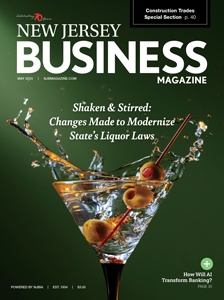
DEI Must Be Woven into the Fabric of Business
By Anthony Birritteri, Editor-in-Chief On Apr 11, 2024The many facets of diversity, equity & inclusion (DEI) initiatives and their polar opposites – discrimination and bigotry – reveal the intricate path businesses must traverse when dealing with the diverse spectrum of employees today. Beyond race, ethnicity, religion, gender, sexual orientation, and age, what comes into play in terms of equity in the workplace can also include pay rate, marital status, education and personal issues that can, for example, impact work hours and lead to the creation of flexible schedules.
During a fireside chat that was part of a morning conference titled Diversity, Equity & Inclusion in Corporate and Not-for-Profit Worlds, hosted by the New Jersey Business & Industry Association (NJBIA), three DEI experts discussed not only how DEI initiatives must be “woven into the fabric” of a company, but they also described their personal stories and epiphanies on fully understanding the perspectives and feelings of others.
Mary A. Rizzuti, practice leader & compensation resources partner at Eisner Advisory Group (a part of accounting firm EisnerAmper), said she remembers a time when she thought she “didn’t see color.”
Explaining this to a woman of color at a networking event, the woman responded: “You should because we all come from a different place.”
“That was a tipping point for me, because I realized that maybe we need to open our eyes a little bit differently,” Rizzuti said.
Commenting that some 80% of employees at large corporations do not know the name of their DEI officers, Rizzuti stressed that DEI is not supposed to be a position or a role, but something “in the fabric of an organization.”
Rizzuti is not a woman of color, and she said it is important for people like her, in her position, to make sure they don’t play an imposter role. That said, she explained that DEI isn’t just about color. … “We have multigenerational, multicultural, and married vs. not married … there’s a lot of discrimination that goes on. There are many facets to DEI that I think are getting ignored,” she said.
For Maria Diaz, director of diversity, equity, inclusion and belonging, New Jersey Resources, the most critical part of DEI is a company’s employees. “They are at the forefront of your organization … without them you don’t have a business,” she said. “Ensuring that they feel like they are part of the fabric [of the company] is what’s critical. [They must feel that the workplace] is a safe space … that they can come to work being who they are and not have to change masks when they enter the door.” Additionally, she said the communities that businesses serve must know they are their partners, and not an organization that doesn’t listen to them or their needs.
An example of being part of the community was given by Herb Ames, president & CEO, Devin Group Inc., and acting president/chairman of the Capital Region Minority Chamber of Commerce. He recalled the story of when he was vice president of a building materials company. His boss told him one day to spend the afternoon with children at the Boys and Girls Club in Trenton.
Ames, who is Black, told the audience, “I never realized what went on at a Boys and Girls Club. I ended up playing basketball with kids from different ethnic backgrounds until 5 o’clock. I told my boss I was hooked, that I was going back the next day to play basketball with the kids.”
His boss surprised Ames by telling him he was now on the company’s board of directors, but more importantly, he told him: “Your people need you.”
Diaz, who is Hispanic, underscored Ames’ story by saying, “Our kids need to see us. Having that exposure is critical. They are at impressionable ages. We never know what kind of impact we’re going to have on someone who might be the next president or attorney general.”
The event was moderated by Catherine Frugé Starghill, Esq., vice president of the New Jersey Council of County Colleges and executive director of the New Jersey Community College Consortium for Workforce & Economic Development. As a woman of color, she ended the session by telling her own story about applying for college back in 1986 and writing an essay titled, “Everything is Better with Diversity.”
“Diversity was not even a term that was widely used then,” she recalled, “but every once in a while, I reflect on that essay, and I think its premise is still true … everything is still better with diversity: Things are more efficient, productive, and creative. If we could always keep that in mind … then maybe we will continue to incorporate DEI as part of the fabric of our organizations.”
To access more business news, visit NJB News Now.
Related Articles:





